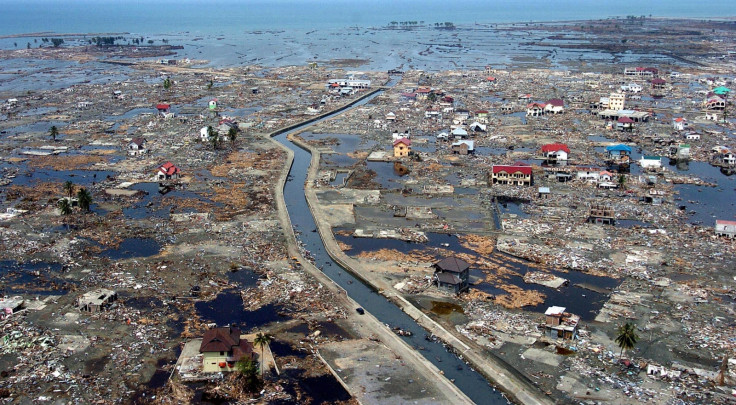Where will the next mega earthquake hit? Curvy faults may be key
Scientists say likelihood that fault curvature is linked to megathrust earthquakes is over 99%.
Mega earthquakes have been linked to how curvy the fault is, with a flatter fault more likely to produce magnitude 9 or above quakes. The discovery helps explain how the 2004 Indian Ocean and 2011 Japan earthquakes took place, and sheds light on regions that might be at risk in the future.
Megathrust earthquakes – or mega earthquakes – are events of magnitude 9 or above. Previously, scientists had thought mega earthquakes could only happen at the boundary between fast converging young tectonic plates. However, when the 2004 magnitude 9.4 and 2011 magnitude 9 earthquakes struck, scientists realised this could not be the case.
Both of these earthquakes took place in areas where the ruptured lithosphere (Earth's crust and upper mantle) was over 120 million years old.
In a study published in the journal Science, researchers from the US and France were looking to find out if geometry could be involved in the occurrence of mega earthquakes. Lead author Quentin Bletery, from the University of Oregon, said: "The way people in the science community think about earthquakes is that some fault areas resist failure more than others and, when they break, they generate large earthquakes.
"The reason they resist failure longer is often debated. I thought variations in fault geometry could be responsible, so I looked for changes in the slope of the major subduction faults of the world."
To develop this idea, Bletery and colleagues created a model the examined the geometry of subduction faults around the globe. They identified slope gradients then matched them to the distribution of the biggest earthquakes from the past.

Findings, much to Bletery's surprise, showed the flatter the fault, the more likely it was to experience a mega earthquake. "What I found is the opposite of what I expected: Very large earthquakes occur on fault areas where the slope is the most regular, or flat."
Calculations showed the likelihood mega earthquakes are linked to fault curves is over 99%. Amanda Thomas, co-author of the study, said: "The correlation of the curvatures to mega-quakes is strong. The data don't lie."
The team believes flat plates may produce mega earthquakes because rupture thresholds are far longer. Conversely, on curved plates the distance a rupture can travel is restricted by portions of the fault that are not ready to fail. "Earthquakes like the one that happened in Sumatra are mind-bogglingly large," Thomas said. "The rupture was 1,600km (994 miles) long."
Identifying regions at risk, they wrote: "The curvature is particularly small in the Japan-Kuriles-Kamchatka, Alaska-Aleutians, Sumatra-Java, South America, and Cascadia subduction zones, which are known to produce magnitude 9.0 earthquakes."
They said the findings will not help predict when the next mega earthquake will take place. Alan Rempel, another co-author, said: "Instead, our findings backstop the idea that if you are at a location that hasn't had evidence for large earthquakes in the past and your location is on a curvy plate, then maybe mega-quake will never happen. Not all subduction zones can have really large earthquakes is the implication of this study." The team now plans to work out exactly why flat plates are more prone to massive earthquakes.
© Copyright IBTimes 2024. All rights reserved.






